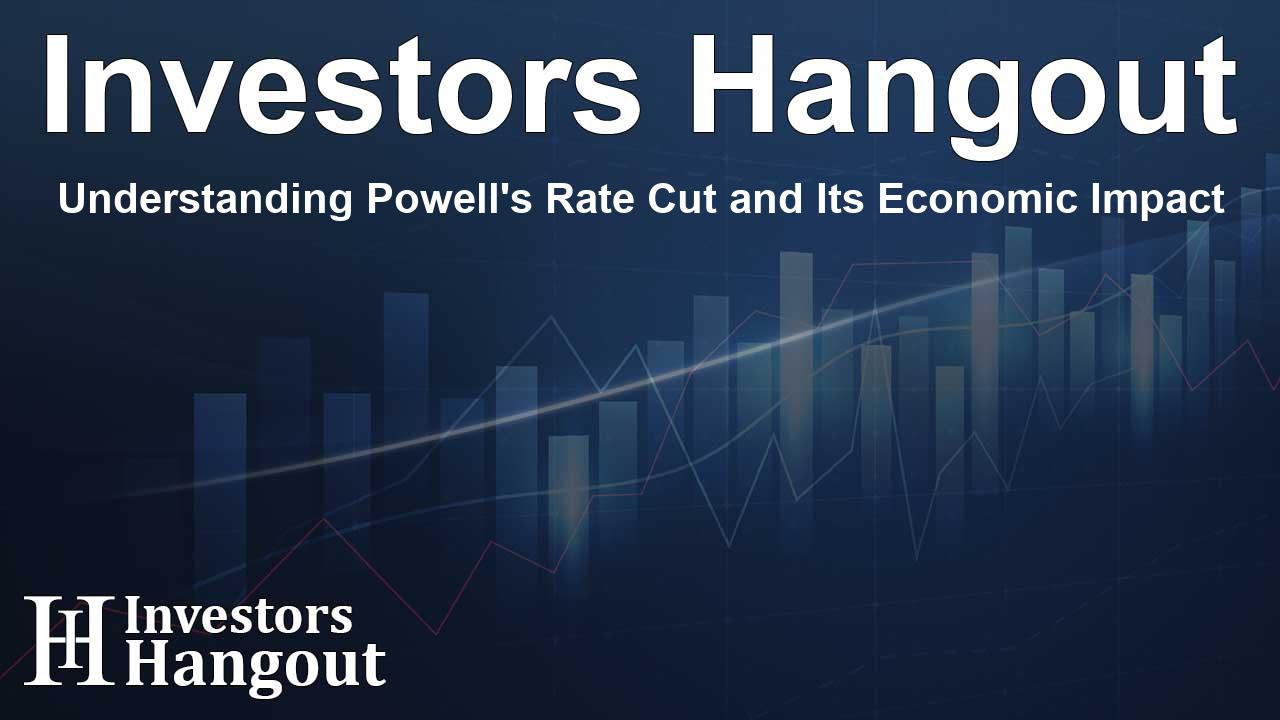Understanding Powell's Rate Cut and Its Economic Impact

Understanding the Recent Rate Cut by the Fed
The Federal Open Market Committee's recent meeting was highly anticipated among economists and market observers alike. Many expected Fed Chair Powell to implement a substantial rate cut, aiming to alleviate financial pressures for American consumers. However, the reality of the situation reveals a complex landscape that may not necessarily lead to an economic soft landing.
Factors Influencing the Rate Cut Decision
Powell moved forward with a 50 basis point rate cut, initiating a process that many believe is essential yet insufficient given the ongoing inflationary pressures. Despite the aim to relieve some economic strain, the decision raised questions about the timing and scale of these adjustments. In particular, economic indicators such as the rising Consumer Price Index at 2.5% year over year accentuate the tightrope the Federal Reserve must walk in balancing growth and inflation.
The Current Economic Climate
With economic growth projected at 3% for the third quarter, the unemployment rate remains historically low, reflecting a robust job market. Nonetheless, the financial landscape is seeing troubling signs. Housing prices have surged, placing homeownership out of reach for many while stock prices have reached new heights, creating a disconnect with average consumer conditions.
Recession Risks on the Horizon
Despite positive growth forecasts, some economists argue that a recession could be on the horizon, potentially necessary for the long-term stability of the economy and the betterment of the middle-class income bracket. Concerns mount that political pressure will prevent a natural contraction, leading to market distortions that might exacerbate future challenges.
The Role of Inflation in Economic Stabilization
The Federal Reserve's dual mandate includes stabilizing prices while promoting maximum employment. However, Powell's recent actions suggest that the committee may be prioritizing short-term political pressures over long-term financial stability. The reality is that continuing to suppress market forces may only worsen inflationary trends, affecting the purchasing power of consumers and compromising living standards.
The Federal Budget and Rising Debt Concerns
Recent government spending trends are alarming. The national debt service has escalated, with figures showing an increase of 30% compared to the previous year. Such statistics hint at the government's struggle with managing a budget deficit that has ballooned to $2 trillion. The latest monthly deficit figure of $380 billion illustrates this troubling trajectory.
Gold Prices Reflecting Economic Uncertainty
Economic uncertainty is evident in the gold markets, which are experiencing all-time highs. This shift highlights investor sentiments regarding the stability of traditional markets and the looming risks associated with excessive national debt. The Federal Reserve's position of being a principal buyer of government debt seems to signal a dependence on low-interest rates to maintain solvency amid fluctuating market conditions.
The Long-term Outlook and Future Predictions
The implications of the Fed's recent decisions are far-reaching. The current trend suggests that after confronting disinflation, the economy could be faced with stagflation—a scenario characterized by stagnant growth paired with high inflation rates. Investors must keep an eye on economic indicators, focusing on the nuances of inflation and growth rates to navigate their strategies effectively, especially with the uncertainty surrounding upcoming elections that may influence economic policy.
Frequently Asked Questions
What was the reason behind the Federal Reserve's rate cut?
The recent 50 basis point rate cut was aimed at supporting the economy amid inflation challenges and high debt service costs, yet it raised concerns about its effectiveness in a still-growing inflationary environment.
How does inflation affect consumer purchasing power?
Higher inflation erodes the value of money, leading to increased prices for goods and services, which in turn reduces consumers’ ability to buy as much as they could previously.
What are the potential risks of aggressive rate cuts?
Aggressive rate cuts can potentially exacerbate inflation if they lead to increased borrowing and spending without corresponding economic growth, prompting further inflationary pressure.
Why is the budget deficit an important economic indicator?
The budget deficit reflects the financial health of a government and can indicate patterns of spending versus revenue generation. A rising deficit might signal unsustainable fiscal policies.
What are the implications of rising gold prices?
Rising gold prices often indicate uncertainty in traditional markets as investors seek stable assets amid fears of inflation or economic downturns, highlighting a lack of confidence in fiat currencies.
About The Author
Contact Olivia Taylor privately here. Or send an email with ATTN: Olivia Taylor as the subject to contact@investorshangout.com.
About Investors Hangout
Investors Hangout is a leading online stock forum for financial discussion and learning, offering a wide range of free tools and resources. It draws in traders of all levels, who exchange market knowledge, investigate trading tactics, and keep an eye on industry developments in real time. Featuring financial articles, stock message boards, quotes, charts, company profiles, and live news updates. Through cooperative learning and a wealth of informational resources, it helps users from novices creating their first portfolios to experts honing their techniques. Join Investors Hangout today: https://investorshangout.com/
The content of this article is based on factual, publicly available information and does not represent legal, financial, or investment advice. Investors Hangout does not offer financial advice, and the author is not a licensed financial advisor. Consult a qualified advisor before making any financial or investment decisions based on this article. This article should not be considered advice to purchase, sell, or hold any securities or other investments. If any of the material provided here is inaccurate, please contact us for corrections.
